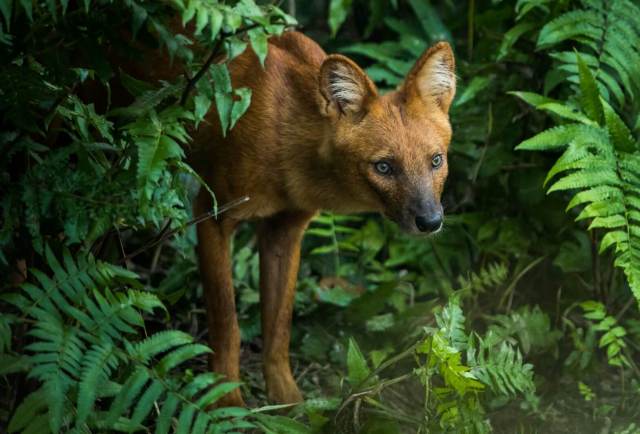Trail cameras set up in a region of northeast India captured a surprising sight: a canine species thought to have gone extinct in the 1990s.
The Herald reported that researchers discovered the Asiatic wild dog, also known as the dhole, roaming the lands in and around the Kaziranga-Karbi Anglong Landscape. The area is a complex mishmash of protected and non-protected lands connected by narrow corridors that the dholes have been traversing undetected for years. As the researchers noted, "This was the only instance where we captured a Dhole on camera in the landscape during the study period."
The elusive Dhole (Cuon alpinus), also called the whistling hunter, has been recorded again in the Kaziranga–Karbi Anglong landscape.
— Chandra Mohan Patowary (@cmpatowary) June 30, 2025
A master of teamwork, it can bring down prey up to 8 times its weight—showcasing the wild's raw power and the region's incredible biodiversity.… pic.twitter.com/V81YSMEiWj

National Geographic describes dholes as "lean and lithe canines" that are similar in size to German shepherds. With their auburn coats, dusky tails, and alert ears, the only thing more charming than their appearance is the distinctive whistle they use to communicate. They are social animals that live in packs, the size of which depends on the presence of tigers. In areas with tigers, packs typically consist of around six individuals, but they can swell to as many as 50 where tigers are not present.
Dholes were once plentiful across Asia but have suffered immensely from habitat destruction; less than a quarter of their historic habitat remains intact. Additionally, their tendency to make off with livestock brings them into conflict with humans. The International Union for Conservation of Nature lists them as "endangered," with only around 2,000 left in the wild.
The study highlights the essential role dholes play in the ecosystem. In areas without tigers or leopards, they are apex predators, maintaining the balance of the food chain by controlling prey populations. Discovering them after such a long absence also confirms the landscape's connectivity and has profound implications for future conservation strategies.
The story demonstrates both the resilience of nature and the importance of trail cameras in conservation work. It enables a better understanding of the true range, ecological role, and population numbers of a threatened species. Such findings can galvanize the public and lay the foundation for future studies.
Save $10,000 on solar panels without even sharing your phone number Want to go solar but not sure who to trust? EnergySage has your back with free and transparent quotes from fully vetted providers that can help you save as much as $10k on installation. To get started, just answer a few questions about your home — no phone number required. Within a day or two, EnergySage will email you the best local options for your needs, and their expert advisers can help you compare quotes and pick a winner. |
As the paper concludes, "Future research should focus on understanding the movement ecology and connectivity of Dholes, as well as how corridor conservation benefits other species."
|
Do you think America does a good job of protecting its natural beauty? Click your choice to see results and speak your mind. |
Join our free newsletter for good news and useful tips, and don't miss this cool list of easy ways to help yourself while helping the planet.










